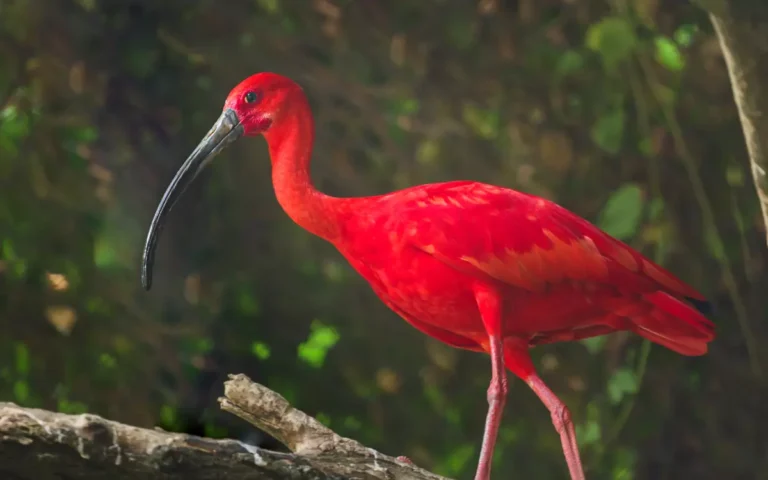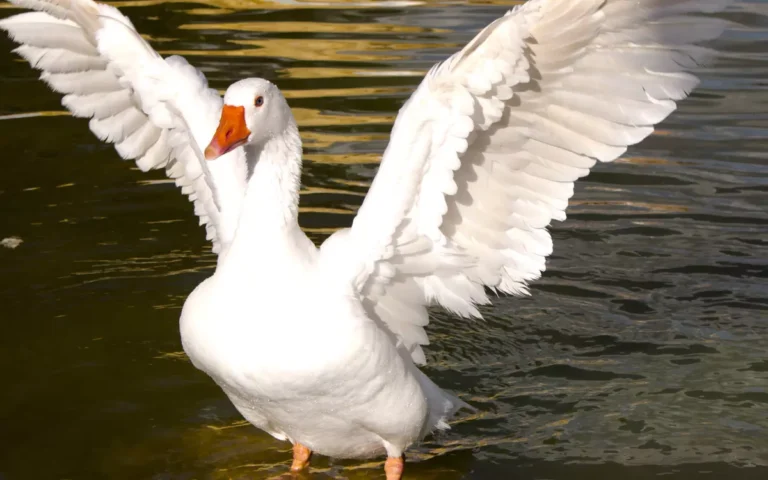14 White Birds in Florida: Exploring Their (ID & PICS)
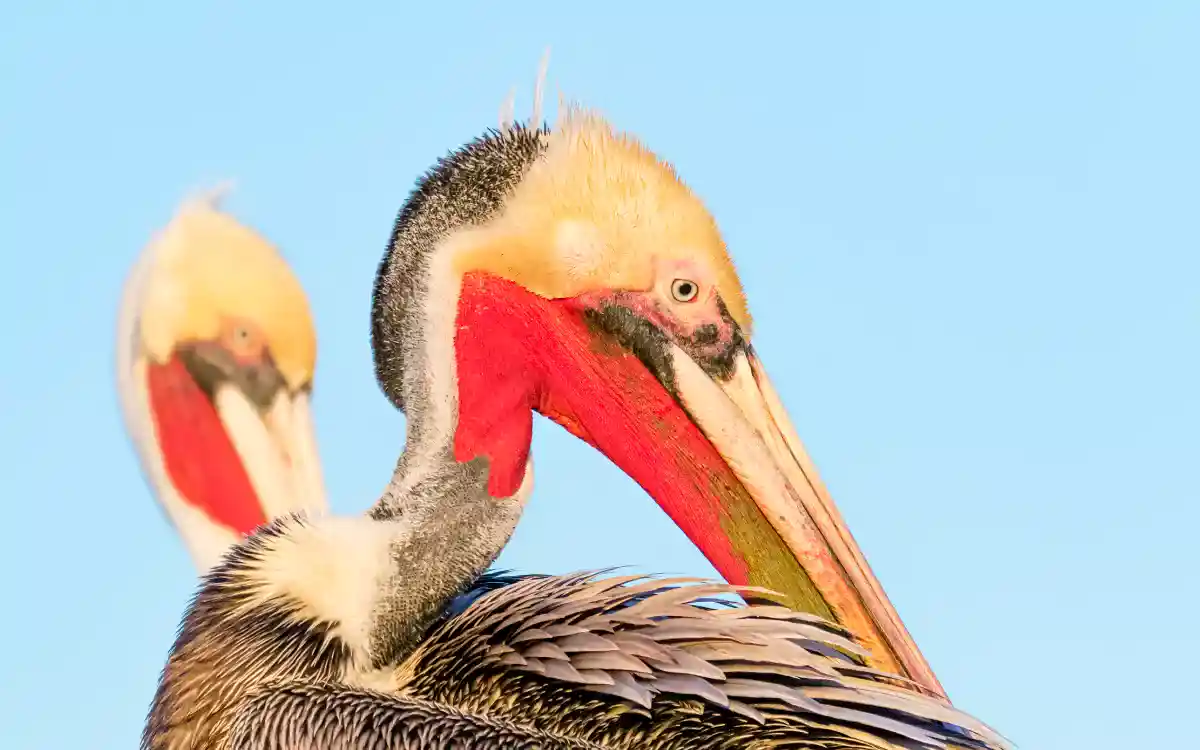
Welcome to our guide on the White Birds in Florida.where iconic species such as the Great Egret, Snowy Egret, and White Ibis grace the skies and waterways of this excited natural Heaven.
List Of White Birds Located In Florida:
1.Great Egret (Ardea alba):

The Great Egret, with its striking white plumage and elegant stature, is a familiar sight in Florida’s wetlands.
These wading birds are known for their slow and deliberate movements as they stalk their prey in shallow waters.
With a wingspan of 52 to 57 inches, they have a remarkable presence in the sky. Great Egrets nest in colonies, typically building their nests in trees near water sources.
- Length: 37 – 41 in (94 – 104cm)
- Weight: 59.96 oz (1699 gm)
- Wingspan: 54 – 55 in (137 – 140 cm)
2.Snowy Egret (Egretta thula):

The Snowy Egret is a smaller relative of the Great Egret but equally captivating. With its delicate white plumage, black bill, and vibrant yellow feet, the Snowy Egret is a sight to behold.
This bird is known for its distinctive feeding behavior—using its bright feet to stir up prey in the water.
Snowy Egrets often nest in colonies alongside other wading birds, making their homes in shrubs and trees near water. Keep an eye out for their elegant dance as they forage for fish, insects, and crustaceans.
- Length: 22 – 27 in (56 -69 cm)
- Weight: 16.75 oz (475 g)
- Wingspan: 39.4 in (100 cm)
3. Wood Stork (Mycteria Americana):

The Wood Stork is a unique bird with a distinctively bald head and long legs. These large wading birds have a distinctive silhouette in flight, with their long necks outstretched.
Wood Storks primarily feed on fish and other aquatic creatures, using their bills to detect prey through touch.
They are known to nest in trees, building their nests from sticks and branches. Despite their somewhat unusual appearance, Wood Storks are an integral part of Florida’s wetland ecosystems.
- Length: 35 – 45 in (89 – 114 cm)
- Weight: 96 oz (2721 g)
- Wingspan: 65 in (165 cm)
4. American White Pelican (Pelecanus erythrorrhynchos):
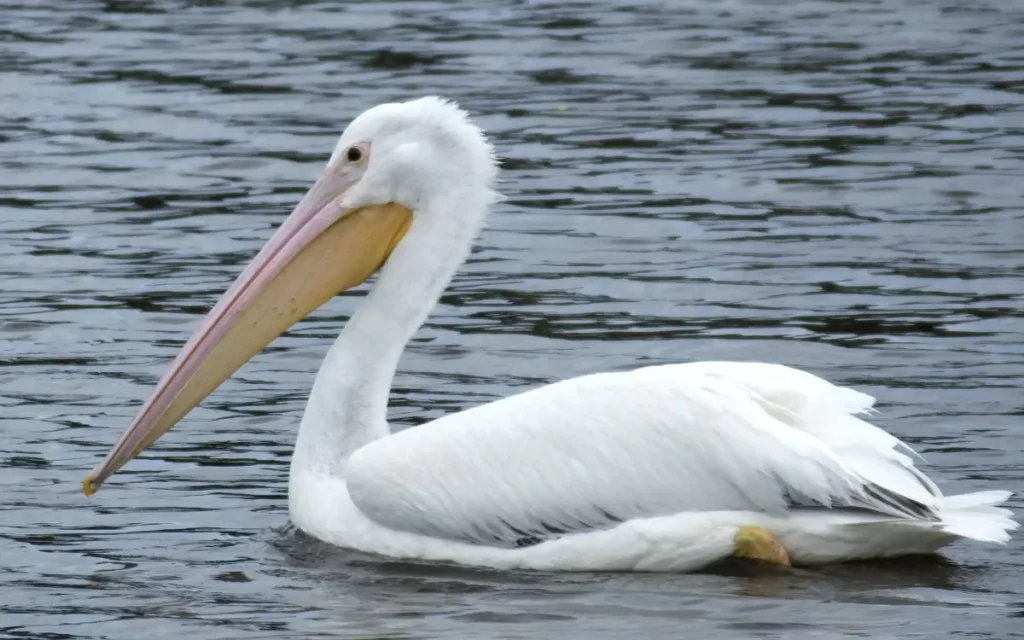
The American White Pelican is a majestic bird that stands out with its massive size and striking appearance.
These pelicans are known for their impressive wingspans, which can reach up to 10 feet. Unlike their Brown Pelican counterparts, American White Pelicans primarily feed by dipping their bills into the water to scoop up fish.
They are often seen in large groups, soaring gracefully over lakes and wetlands. These birds are known for their migratory patterns, making them a seasonal delight for birdwatchers.
- Length: 60 – 63 in (152 – 160 cm)
- Weight: 246.4 oz (6983 g)
- Wingspan: 96 – 110 in (244 – 279 cm)
5. Roseate Spoonbill (Platalea ajaja):
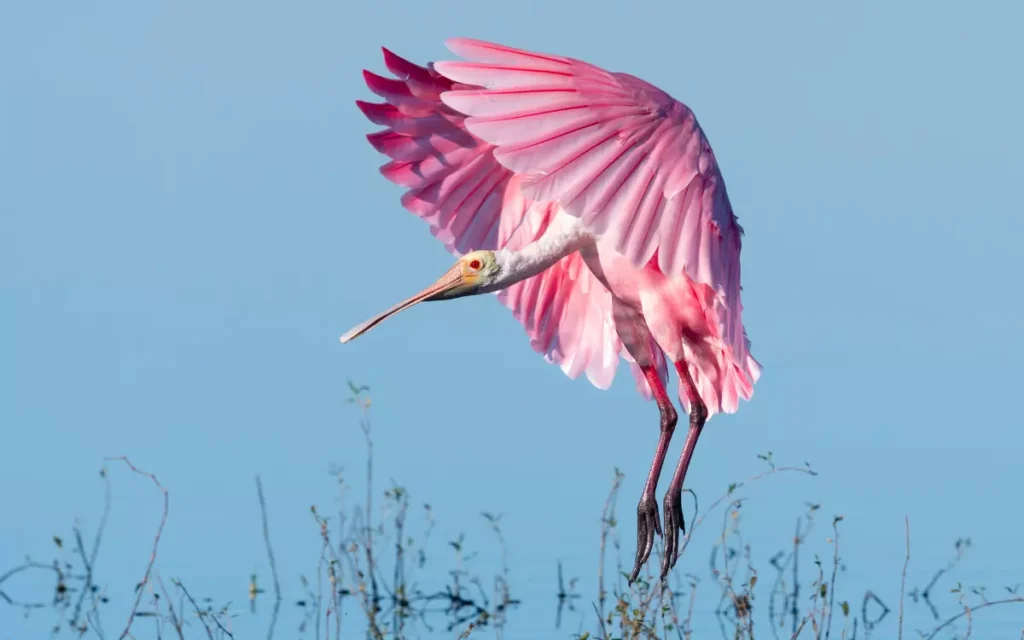
The Roseate Spoonbill is a true gem among Florida’s white birds. With its vibrant pink plumage and distinctive spoon-shaped bill, it’s a sight that’s hard to miss.
These birds use their unique bills to sweep through shallow water, capturing crustaceans, fish, and insects.
They nest in shrubs and trees, forming colonies in coastal and wetland areas. The Roseate Spoonbill’s striking appearance and foraging behavior make it a favorite subject for photographers and bird enthusiasts alike.
- Length: 27.9-33.9 in (71-86 cm)
- Weight: 42.3-63.5 oz (1200-1800 g)
- Wingspan: 47.2-51.2 in (120-130 cm)
Read also:-
- 36 Species Warbler Found Florida:Length,Weight ,Wingspan
- 11 Types of Geese Found In Florida
- 16 Brown Birds In Florida
- 10 Woodpeckers in Florida (Id & Pic)
- 11 Types of Red Birds in Florida
6. Cattle Egret (Bubulcus ibis):

The Cattle Egret is a small white bird with a knack for following large animals, such as cattle and other livestock.
These birds feed on insects stirred up by the movement of these animals, forming a unique and beneficial relationship.
Cattle Egrets have a compact build and can often be found in open fields, pastures, and wetlands. Their nesting habits vary, with colonies often forming in trees near water.
- Length: 18.1-22.1 in (46-56 cm)
- Weight: 9.5-18.1 oz (270-512 g)
- Wingspan: 34.6-37.8 in (88-96 cm)
7.White Ibis (Eudocimus albus):

The White Ibis is a graceful bird with its distinctive curved bill and bright red face. These birds are skilled foragers, using their long bills to probe for insects, crustaceans, and small aquatic creatures in the mud.
White Ibises are social birds often seen in groups, whether foraging in shallow waters or soaring through the skies.
They are adaptable to various habitats, including marshes, wetlands, and coastal areas. Keep an eye out for their elegant plumage and unique feeding behaviors.
- Length: 22.1-26.8 in (56-68 cm)
- Weight: 26.5-37.0 oz (750-1050 g)
- Wingspan: 35 – 41 in (90 – 105 cm)
8.Tricolored Heron (Egretta tricolor):

The Tricolored Heron is a striking bird with its blue-gray plumage, distinctive white belly, and reddish-brown neck.
These birds are known for their patient hunting techniques, often standing motionless in shallow water before striking at prey with lightning-fast precision.
Tricolored Herons are commonly found in coastal and freshwater habitats, where they feed on a variety of fish and aquatic invertebrates. Their unique appearance and feeding behaviors make them a favorite subject for birdwatchers and photographers.
- Length: 23.6-27.6 in (60-70 cm)
- Weight: 14.6 oz (415 g)
- Wingspan: 37.4 in (95 cm)
9.Little Egret (Egretta garzetta):

The Little Egret is a small wading bird with elegant white plumage and a slender build. Despite its size, this egret is a skilled hunter, using its sharp bill to catch fish, amphibians, and insects in shallow waters.
Little Egrets are often seen foraging alone or in small groups along the water’s edge. They nest in colonies, creating nests in trees and shrubs near water sources. Keep an eye out for their delicate appearance and agile hunting techniques.
- Length: 55–65 cm (22–26 in)
- Weight: 11 oz (311.84 gm)
- Wingspan: 88–106 cm (35–42 in)
10. Mute Swan (Cygnus color):

The Mute Swan is a graceful bird known for its elegant neck and distinctive curved bill. With their striking white plumage, Mute Swans are a symbol of beauty and serenity.
These swans can often be found gliding across ponds, lakes, and rivers, feeding on aquatic vegetation and small aquatic creatures.
While their name suggests otherwise, Mute Swans can be quite vocal, producing various sounds to communicate with each other. Their presence adds an air of elegance to Florida’s waterways.
- Length: 50.0-59.8 in (127-152 cm)
- Weight: 194.0-504.4 oz (5500-14300 g)
- Wingspan: 81.9-93.7 in (208-238 cm)
11. Whooping Crane (Grus Americana):

The Whooping Crane is a rare and magnificent bird, known for its stark white plumage and distinctive “whooping” call.
With its impressive height and wingspan, the Whooping Crane is one of the tallest birds in North America.
These cranes were once on the brink of extinction but have seen successful conservation efforts to help their populations recover. Whooping Cranes are migratory birds, making their way to Florida during the winter months. Witnessing these graceful giants in flight is a truly awe-inspiring experience.
- Length: 59.1 in (150 cm)
- Weight: 211.6-275.1 oz (6000-7800 g)
- Wingspan: 90.2 in (229 cm)
12.Glossy Ibis (Plegadis falcinellus):

The Glossy Ibis is a captivating bird with its iridescent plumage that shimmers with shades of green and purple.
These ibises are known for their curved bills and long legs, which they use to probe for insects, crustaceans, and other small creatures in mud and shallow waters.
Glossy Ibises are often found in marshes, swamps, and wetlands, foraging in both freshwater and saltwater environments. Their unique appearance and feeding behaviors make them a delight to observe for bird enthusiasts.
- Length: 18.9-26.0 in (48-66 cm)
- Weight: 18.7-27.1 oz (530-768 g)
13.Great White Heron (Ardea herodias occidentalis):

The Great White Heron is a subspecies of the Great Blue Heron, known for its impressive size and all-white plumage.
These herons are skilled hunters, stalking fish, amphibians, and other small prey in shallow waters. Great White Herons can often be seen in coastal and wetland areas, using their stealthy approach to catch their next meal.
Their majestic appearance and patient hunting techniques make them a true spectacle in Florida’s natural landscapes.
- Length: 37.0-40.9 in (94-104 cm)
- Weight: 35.3 oz (1000 g)
- Wingspan: 51.6-57.1 in (131-145 cm)
14. Brown Pelican (Pelecanus occidentalis):

The Brown Pelican is a distinctive bird known for its large body, long bill, and unique diving behavior.
Unlike other pelicans, Brown Pelicans plunge-dive into the water to catch fish, using their expandable pouches to scoop up prey.
These pelicans are often seen soaring over the ocean, gliding gracefully in search of their next meal. Brown Pelicans are known for their resilience, having made a remarkable recovery after facing significant population declines due to environmental pressures.
- Length: 39.4-53.9 in (100-137 cm)
- Weight: 70.5-176.4 oz (2000-5000 g)
- Wingspan: 78.7 in (200 cm)
Know more about –List of birds of Florida
FAQs:
Q: Where can I spot these white birds in Florida?
A: You can find these white birds in various habitats, including wetlands, coastal areas, lakes, and rivers throughout Florida.
Q: Do all these birds nest in colonies?
A: Many of these birds, including the Great Egret, Snowy Egret, and Roseate Spoonbill, nest in colonies for protection and communal nesting.
Q: Are these birds migratory?
A: Yes, some of these birds, like the American White Pelican and Whooping Crane, are migratory and visit Florida during specific seasons.
Q: How can I identify these birds by their sizes?
A: Each bird’s length, weight, and wingspan are distinct, allowing for easy identification based on these measurements.
Q: What is the significance of these white birds in Florida’s ecosystems?
A: These birds play crucial roles in their respective ecosystems by helping control insect populations, supporting aquatic food chains, and contributing to the overall balance of local habitats.
Q: Can I find these birds in other states?
A: While some of these species have wide ranges, Florida’s diverse habitats make it an especially important home for these white birds.
Conclusion:
Florida is home to 14 remarkable white birds, each with unique traits and habitats. finding these birds can improve our understanding of Florida’s rich biodiversity and the importance of preserving their natural environments.


